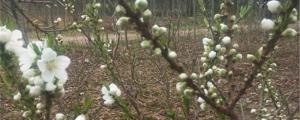How to Plant a Palm Tree in South Carolina
South Carolina's warm, subtropical climate makes it an ideal destination for palm trees. If you're thinking of planting a palm tree in your yard, it's important to choose the right species, prepare the soil properly, and ensure the tree is properly cared for after planting. In this article, we'll take a closer look at the steps for planting a palm tree in South Carolina.
Choosing the Right Palm Tree
The first step in planting a palm tree in South Carolina is to select the right species for your environment. Some of the most popular varieties of palm trees in the state include the Sabal Palmetto, the Windmill Palm, and the Queen Palm, among others. Each species has unique characteristics, such as height, foliage, and fruit, so it's important to consider these factors when choosing a palm tree.
It's also important to choose a healthy palm tree when making your selection. Look for a tree with a strong trunk, healthy green leaves, and no signs of disease or pests. You may also want to consider purchasing a tree that has been grown locally, as these trees are likely to be better adapted to the local climate.
Preparing the Soil
Once you have selected your palm tree, the next step is to prepare the soil for planting. Palm trees prefer well-draining soil that is slightly acidic. If your soil is too heavy, you may need to add sand or other organic matter to improve drainage. You should also test the soil's pH level to determine whether you need to adjust the acidity.
Before planting your palm tree, you should also dig a hole that is twice as wide as the root ball and the same height as the root ball. This will give the tree plenty of room to grow and ensure that the roots are surrounded by well-draining soil.
Planting the Palm Tree
When you're ready to plant your palm tree, carefully remove the tree from its container and loosen the roots at the bottom of the root ball. Place the tree in the hole and backfill with soil, making sure that the tree is level and the soil is firm around the roots. Water the tree thoroughly to help settle the soil and remove any air pockets.
You may also want to stake the tree to prevent it from falling over in windy conditions. Secure the tree to the stake using a soft strap or tie, being careful not to damage the trunk of the tree.
Caring for Your Palm Tree
After planting your palm tree, it's important to care for it properly to ensure that it grows strong and healthy. Water the tree regularly, providing enough moisture to keep the soil moist but not waterlogged. You may also want to fertilize the tree every few months to promote growth and protect it from pests and disease.
Palm trees in South Carolina can also benefit from regular pruning to remove dead or damaged fronds. This will help the tree to conserve energy and grow strong, healthy fronds. Be sure to use pruning shears that are sharp and clean to avoid damaging the tree.
Conclusion
Planting a palm tree in South Carolina can be a rewarding experience, but it's important to choose the right species, prepare the soil properly, and care for the tree after planting. By following these steps, you can enjoy a healthy, beautiful palm tree in your yard for years to come.

 how many times do yo...
how many times do yo... how many planted tre...
how many planted tre... how many pine trees ...
how many pine trees ... how many pecan trees...
how many pecan trees... how many plants comp...
how many plants comp... how many plants can ...
how many plants can ... how many plants and ...
how many plants and ... how many pepper plan...
how many pepper plan...































